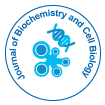Lipid Metabolism and Cellular Function: Insights into Lipid Biochemistry and Disease
Received Date: Nov 01, 2024 / Published Date: Nov 29, 2024
Abstract
Lipid metabolism is a critical aspect of cellular biochemistry, influencing various cellular processes such as energy storage, membrane structure, signaling, and the regulation of gene expression. Lipids, including phospholipids, triglycerides, cholesterol, and sphingolipids, serve as essential components of cellular membranes and as signaling molecules that modulate cellular responses to external and internal cues. Dysregulation of lipid metabolism is implicated in a range of diseases, including metabolic disorders, cardiovascular diseases, neurodegenerative conditions, and cancer. This review explores the biochemical pathways involved in lipid synthesis, degradation, and trafficking, with a focus on how these processes impact cellular function and contribute to disease pathology. We highlight key enzymes, regulatory factors, and lipid signaling pathways, such as the PI3K/Akt pathway, SREBPs, and lipid droplets, and discuss their roles in maintaining cellular homeostasis. Additionally, we examine how disturbances in lipid metabolism, such as altered fatty acid oxidation or cholesterol accumulation, can lead to pathological conditions and the emerging therapeutic strategies targeting lipid pathways for disease intervention. Understanding lipid biochemistry at a molecular level provides critical insights into both normal cellular function and the pathogenesis of lipid-associated diseases, offering potential targets for novel therapeutic approaches.
Citation: Amar M (2024) Lipid Metabolism and Cellular Function: Insights into LipidBiochemistry and Disease. J Biochem Cell Biol, 7: 276.
Copyright: © 2024 Amar M. This is an open-access article distributed under theterms of the Creative Commons Attribution License, which permits unrestricteduse, distribution, and reproduction in any medium, provided the original author andsource are credited.
Share This Article
Recommended Journals
Open Access Journals
Article Usage
- Total views: 237
- [From(publication date): 0-0 - Apr 04, 2025]
- Breakdown by view type
- HTML page views: 87
- PDF downloads: 150
